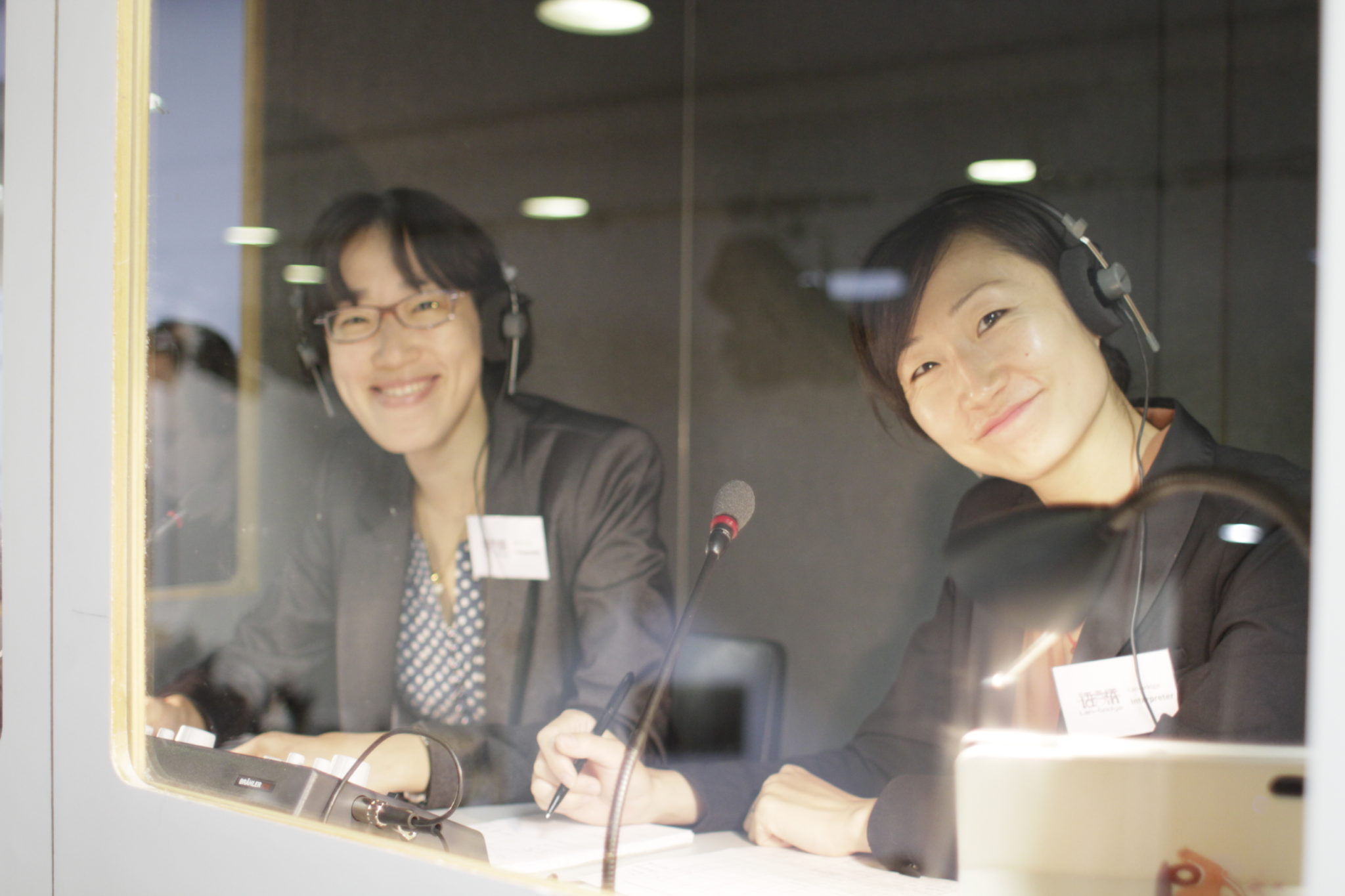- +44 (0)20 8334 8266
- uk@lan-bridge.com
- 中文
Types of interpretation
Not sure which type of interpretation best suits your needs, or not sure what options are available? Here is our guide to the types of interpretation available from Lan-bridge and how and when they are best used.
Consecutive interpretation
This is the most basic and common type of interpretation, in which the interpreter listens to a unit of the source language, often making notes, then delivers a translation of the content after the original speaker. This type is often used for meetings, seminars, speeches, presentations, and so on where the listeners all understand one of two languages – for example, and most commonly in China, Chinese and English. It does not require any special equipment. Often the interpreter will have a microphone and interpret the source language from off-stage; at other times the interpreter will be alongside the speaker.
When planning an event that will use consecutive interpretation, it must be remembered that any speeches or presentations will require double the time. It is also best for the speaker and interpreter to decide beforehand how long each unit of speech will be, whether a few sentences or a few minutes.
Simultaneous interpretation
In simultaneous interpretation, the interpreter translates the source language into the target language while the source language is being spoken. This is often used at high-level meetings and events where multiple languages are required, or where the organizers feel that the flow and speed of communication offered by simultaneous interpretation is desirable. For example, consecutive interpretation is often used at UN, EU or other multinational meetings, so that each listener has the source language translated into their own native language at the same time. This is a very efficient form of translation and can greatly speed up the communication process.
Simultaneous interpretation requires the use of microphones for the speaker, a headset and microphone in a sound-proof booth for the interpreter and special headsets for those listening to the translation. Also note that simultaneous interpretation is very mentally taxing for the interpreter, and regular rest breaks must be provided to prevent the quality of translation deteriorating. Normally, two interpreters will take turns interpreting and resting in 20-30 minute blocks.
If there are just one or two people who require translation into their native language from the source language, it may be best to use whispered interpretation.
Whispered interpretation
Where the interpreter whispers a simultaneous interpretation to the listener. This is often used at meetings or events where there are only a few people who need the original language to be translated. This may also be used during small scale meetings where time is an issue, and participants do not want to wait for a consecutive translation. However, it is tiring for both the interpreter and the listener, so not appropriate for long periods of time.
Whispered translation is generally simultaneous, but for small scale meetings the original speaker may break their speech into smaller chunks or pause to give the interpreter more time to translate into the target language.
Liaison/escort interpretation
This type of interpretation is interpretation between a small group of people who speak two different languages, relaying what was said into and out of the source language. This type of interpretation is often used during business meetings, negotiations, tours of facilities or other similar events. Interpretation may be consecutive or whispered simultaneously. Often the client will be able to give instructions or extra information to the interpreter to help them prepare.
Escort interpretation: Often liaison interpreting can be required for days or even weeks, where for example, interpreter will accompany their client on a business trip or tour, or during the course of their daily work. Liaison interpreters can also be used to accompany personnel on a trip to a foreign company to help them interact with their foreign counterparts.
Other services:
Bilingual concierge
We offer a service to Chinese companies coming to the UK whereby we provide a bilingual guide to accompany them to business meetings, tourist attractions, shopping and so on as well as helping solve any other problems or requests that arise when spending time abroad. We can also offer this service to people traveling to China on a trip or tour.
Fully managed language services for events
If you are hosting an event with Chinese guests or in China, you may want to consider our fully managed service. For this we translate all event collateral, arrange interpretation, advise on appropriate food and accommodation, assist with invitations and logistics, and bilingual guides for foreign guests. Choosing us for all of the language-related needs of the project or event ensures consistency across materials, that foreign guests are fully cared for, and that everyone enjoys and benefits from the event.
Interpreter outsourcing
Lan-bridge also offers an interpreter outsourcing service for companies who need full-time interpreters on short term contracts, often based abroad. We will hire the interpreter who will be based at the client’s location and perform everyday interpretation and translation tasks. This is especially useful for working with contractors on short-term or technical projects and for ensuring that language is no barrier to accessing foreign expertise.
To discuss your Chinese event or project and the supporting services Lan-bridge can provide, please contact us. You can also read our checklist for what to consider when ordering interpretation services to help you prepare. If you have any questions, please do get in touch!





